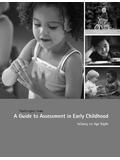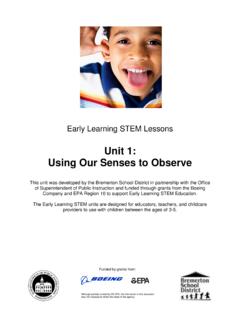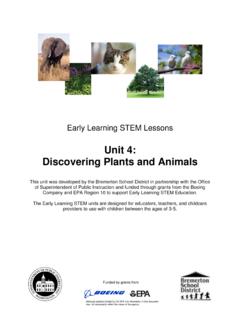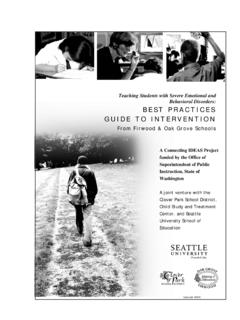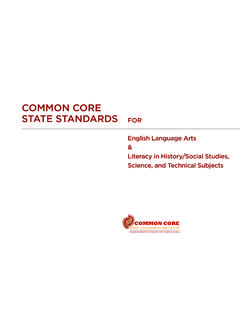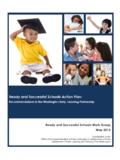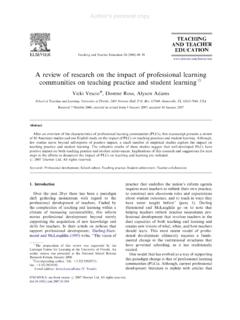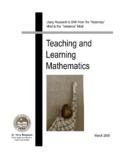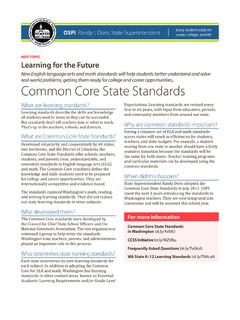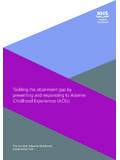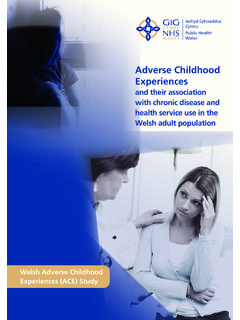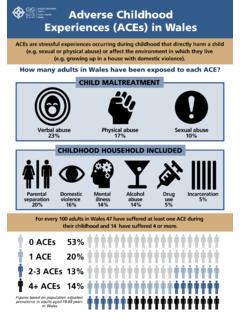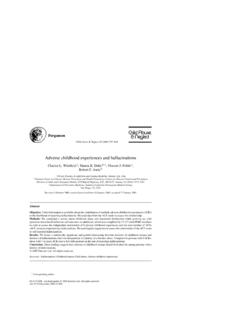Transcription of Adverse Childhood Experiences Trauma, Adversity, …
1 5/24/20111 Ron Hertel, Program SupervisorReadiness to Learn, Compassionate SchoolsOffice of Superintendent of Public InstructionLiz Frausto, DirectorFamily and Community PartnershipsPuget Sound Educational DistrictTrauma, Adversity, and LearningAdverse Childhood ExperiencesThe 1998 Adverse Childhood Experiences study 17,421 adult members of a large HMO, 44 percent of respondents reported suffering sexual, physical, or psychological abuse as children, and percent reported domestic violence in the home.(Fellittiet al., 1998) Adverse Childhood Experiences ( aces )COUNTING ACEsThe ACE Score is the number of categories of Adverse Childhood experience to which a person was ACE Study found that the number of categories, not necessarily the frequency or severity of the Experiences within a category, determine health outcomes across the population as a & alcohol abuseChronic obstructive pulmonary disease & ischemic heart diseaseDepressionFetal deathHigh risk sexual activityIllicit drug useIntimate partner violenceLiver diseaseObesity Sexually transmitted diseaseSmokingSuicide attemptsUnintended pregnancyEarly DeathThe higher the ACE Score, the greater the incidence of co-occurring conditions from this LONG PHYSICAL.
2 MENTAL & BEHAVIORAL OUTCOMESACEs in WASHINGTONACEs impact student to process verbal/nonverbal written to effectively use language to relate to of sequential understanding cause and of sense of self and to distinguish executive functions: setting goals, developing a plan, carrying out goals, reflecting on the with transitions (endings and beginnings).0%10%20%30%40%50%60%Academic Failure (36% of Students)Significant Attendance Problems (13% of Students)Significant School Behavior Problems (28% of Students)No Known Adverse Events N=82827%7%16%One Reported Adverse Event N=33236%15%33%Two Reported Adverse Events N=15952%19%45%Three or more Adverse Events N=19658%32%54%Percent of Children with Adverse Experiences Who Are Currently Experiencing Significant Academic ProblemsBlodgett et al, 20100%10%20%30%40%50%60%70%80%No Known Adverse Events N=828 One Reported Adverse Event N=332 Two Reported Adverse Events N=159 Three or more Adverse Events N=196 Students with One or More School Problems36%57%69%79%Students with One or More School ProblemsBlodgett et al, 20105/24/20113 PIERCE COUNTY JUVENILE COURT IMPROVEMENT PROJECT.
3 A CASE STUDY OF THE ROLE OF aces IN COSTLY SOCIAL PROBLEMS(Grevstad, 2007)ACE Prevalence17%48%34%58%25%17%0%20%40%60%8 0%Zero to OneTwo or ThreeFour or MoreJuvenile past winter the Pierce County Juvenile Court provided the Tacoma Urban Network with ACE data for 1,980 youth who were discharged from probation between January 2004 and December 2006 (Grevstad, 2007).Probation Youth -vs-HMO Population71%43%58%15%33%82%61%69%15%41% 85%64%74%20%51%0%10%20%30%40%50%60%70%80 %90%EarlySuspensionMore than 4 SuspensionsBelow C gradepointDropped Outor ExpelledSpecial EdStudentZero or OneTwo or ThreeFour or More(Grevstad, 2007)School Performance & ACE CategoryHIGH ACE STUDENTS OFTEN HAVE HIGH ACE PARENTSC hildhood Resiliency Starts With:A shift in thinking from What s wrong with you?
4 To What happened to you? Resilient students need resilient teachers. 5/24/20114 Trauma, Compassion, and ResiliencyDefined It s difficult to play chess in a hurricane. Dr. Kenneth Fox Mount Vernon School DistrictMount Vernon, WashingtonTrauma Response Survival trumps learning. Restrict their processing of what is happening around them, disconnect or act coercively toward others, and cannot formulate a coherent, organized response. They have difficulty regulating their emotions, managing stress, developing empathy, and using language to solve trauma can cause the brain to be underdeveloped or damaged or undeveloped brain often causes a child to react differently to a stressful situation than a child without those , a child who is more reflexivethan reflectivemay have a biological reason for behaving the way they did which is beyond their control.
5 This is an essential understanding for all school staff in order to modify their approach to the of the Impact of TraumaThe brain was designed to solve problems related to surviving in an unstable outdoor environment and to do so in almost constant Medina, Bain RulesBrain Functioning 5/24/20115 BRAIN RULE # 8 Stressed brains don t learn in the same way that non stressed brains Medina, PhD, Seattle Pacific UniversityUniversity of WashingtonSelf-Care: An Ethical Obligation for Those Who CareRIPPLE EFFECT COMPASSION FATIGUE VICARIOUS TRAUMA BURN OUTT raumatic events are like rocks thrown into our pond. Each rock causes a series of for Compassionate ClassroomsBuilding CompassionateSchool-Community Partnerships That Work5/24/20116 Case Studies and Vignettes Direct From the FieldResourcesThree Essential the school s needs to determine the level of information required so that professional development training could target staff of staff development focusing on a definition of Adverse Childhood Experiences and complex trauma and potential effects on student staff with strategies to work with children who had been exposed to Adverse Childhood Experiences and complex Thinking as a Leadership PracticeIncreasing LeverageQuestions?
6 What Happened?What s been happening?Where are the changes?Why?.. How?What explains this?TheoriseWhat are the beliefs?Assumptions?Action?Knee-jerk reactionAnticipate, planDesignTransformEventsTrends and PatternsStructureMentalModelsThe Water LineSlide courtesy of George Ambler Staff to staff Staff to students Students to students School to parents and communityMental Models Affect5/24/20117 Benefits all students, including trauma affected Part of overall school plan, improvement plan Leadership engaged aces content changes the mental model A process, not a programCompassionateSchools Key Points Include chance for all staff to buy in Value existing efforts Create a Compassionate Learning Community Utilize EBP/promising practices, Safe and Civil Schools, PBIS.
7 Tribes < Calming Sustain and evaluateCompassionateSchools Key Points Leadership team 4-8 people Vision Guiding behaviors Rubric leading to goals Time to think and learn togetherCompassionate Learning Communities (CLC)Compassionate Learning Community Matrix , Goals and Climate CompetencyComponent 3 Collaborative Culture Little or No Limited Mostly Fully or No FunctionalComponent 5 Positive Discipline Little or No Limited Mostly Fully or No Functional5/24/20118 EvaluationThanks for all you do to support students!
